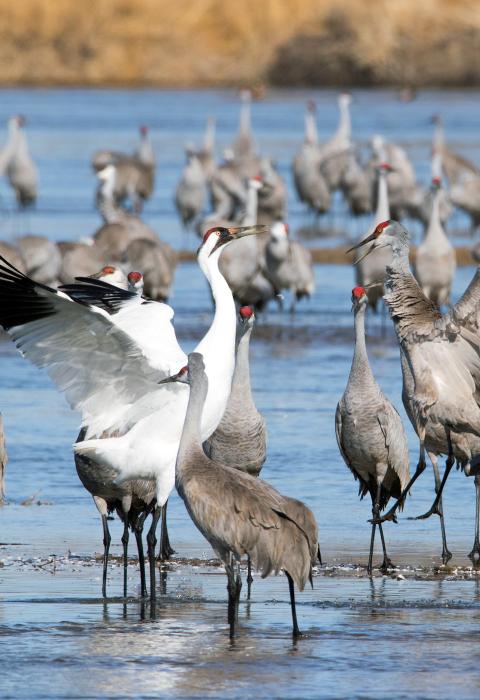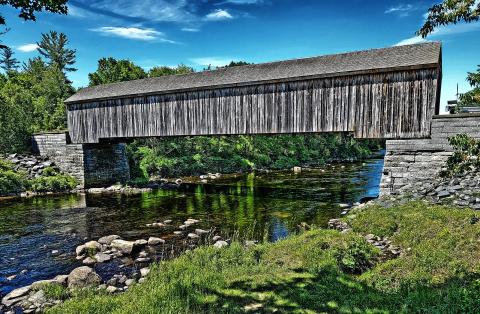One of these is not like the others . . . but he does belong. Every year hundreds of thousands of Sandhill cranes congregate on the Platte River during their spring migration, forming large flocks that use the sandbars of the Platte River as a nighttime refuge before dispersing to local fields to feed during the day. Here, a rare whooping crane joins them. With less than 600 left, any sighting of a whooping crane is to be treasured. BTW, Sandhill cranes are named after the Sandhills Region of Nebraska, where a crane fossil from the Miocene, thought to be about ten million years old, was found that is almost identical to today's cranes.
The Nationwide Rivers Inventory (NRI) is a listing of more than 4,500 free-flowing river segments in the United States that are believed to possess one or more “outstandingly remarkable” natural or cultural values judged to be at least regionally significant. Hence, NRI river segments are potential candidates for inclusion in the National Wild and Scenic River System. Listing on the NRI, or any other source list, does not represent an official determination of eligibility, and conversely, absence does not indicate a river’s ineligibility. Information about use of the NRI is found at www.nps.gov/nri/.
NRI Consultation
The NRI lists rivers and river segments that appear to meet minimum Wild and Scenic Rivers Act eligibility requirements based on their free-flowing status and resource values and which are therefore afforded some protection from the adverse impacts of federal projects until they can be studied in detail.
Under the Wild and Scenic Rivers Act Section 5(d)(1) and related guidance, all federal agencies must seek to avoid or mitigate actions that would adversely affect NRI river segments. The National Park Service provides instructions on the process of consulting on projects potentially affecting NRI segments and a full listing of river segments.
Background
Maintained by the National Park Service, the NRI was compiled in part to fulfill a Wild and Scenic Rivers Act mandate, found in Section 5(d)(1), that federal agencies consider impacts on potential wild and scenic rivers in all agency “planning for the use and development of water and related land resources.” This inventory, originally completed in 1982 and updated in 1993 and 1995, seeks to identify such rivers based on the Act’s basic eligibility criteria. Under a Presidential Directive issued in 1979, each federal agency, as part of its normal planning and environmental review processes, is required to identify potential additions to the National Wild and Scenic Rivers System. In 2024, the National Park Service updated the NRI to add river segments managed by the four wild and scenic river-administering agencies using readily available federal planning information, resulting in approximately 12,000 additional miles being officially listed. Learn more about the NRI and find rivers near you at www.nps.gov/nri/.


